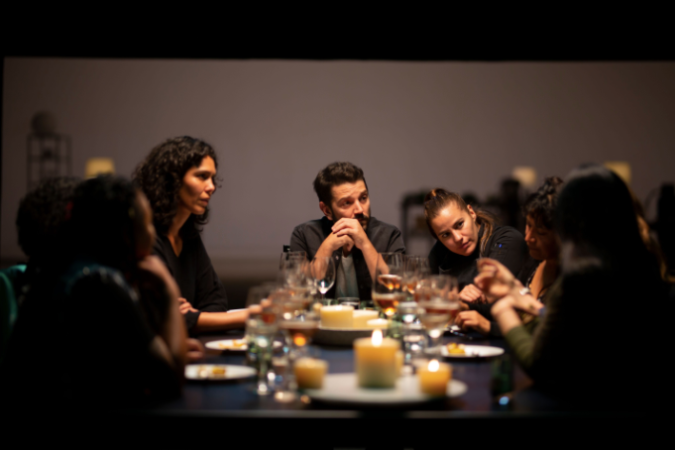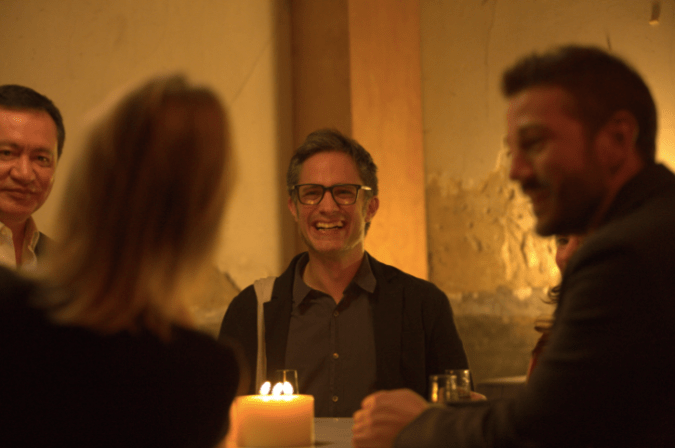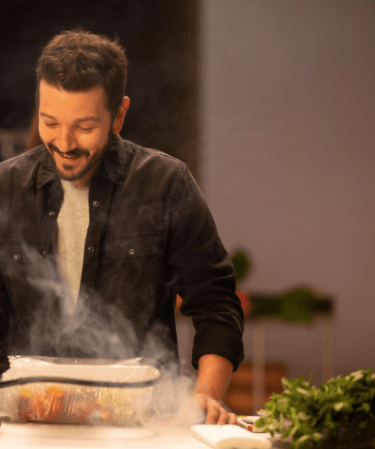Pan y Circo (Bread and Circus) places Luna and noteworthy figures from all over Latin America—including activists, artists and politicians, among others—in a dinner party setting, to discuss some of the most topics currently affecting Mexico and Latin America.
Each episode, with the exception of one filmed from home due to the COVID-19 pandemic, is around an in-person spread. Each three-course meal is prepared by one of Mexico’s top chefs, who share their views on the topic at hand through both their dishes and personal experiences with the other guests.
As simple as the premise might come across, the conversations are nuanced and offer different perspectives on subjects ranging from gender violence to global warming. Each night starts with pleasantries and maybe a drink or two before heated and confrontational moments where assumptions are challenged and common fallacies are called out. However, each night ends with a toast and a newfound understanding of pressing issues.
Produced by La Corriente del Golfo—the production company founded by Luna and fellow Y Tu Mama Tambien co-star Gael Garcia Bernal—Pan y Circo is the shingle’s first title for Amazon’s streaming service.

Remezcla spoke with Luna about his latest project ahead of its release on August 7. The series premieres with three episodes, followed by a new episode every week. This interview was translated and lightly edited for clarity.
What is it about being at a dinner table, with quite a delicious dinner, that opens up people to interact?
There are things that happen at the dinner table that don’t happen anywhere else. Being at the table reminds us that we can all share something, at least some bread or a little mezcal, while we hear a story.

It doesn’t matter if we believe in different things, vote for different candidates or experience opposing realities. At the dinner table, we have an opportunity that does not happen in any other space: to listen to each other. Nowadays, it is acceptable for conversations to only be yelling at each other without listening and, to me, that is dangerous.
That is the motive behind Pan Y Circo. We are going to talk about the topics that cannot wait to be discussed.

Currently, it seems that everyone wants to voice their opinion but nobody wants to listen. How important is the act of listening to you?
If you are willing to listen it says so much about you. When you listen, you become a person that I admire and today there are fewer and fewer people like that.
We are refusing to see the complexity of life and the substance and depth of life when we don’t listen. We live on a surface of understanding that seems to be enough for some, and the opportunity to accept our own ignorance is a great step.
There were many times where I was at the table believing to know a lot about something or believing I had a clear posture on a subject and then realizing that I am ignoring many things. At the discussion of racism and identity, for example, that table confronts me deeply, as did the gender violence and migration tables.
We tend to talk a lot about the northern border, and in Mexico we don’t remember the southern border. We criticize how Mexicans who try to change their reality are treated in the United States, but we are not critical in how we treat Central Americans and South Americans who pass through Mexico to reach their destination. I understand that people shy away but it is essential that we take action and wake up somehow.
So was this like a learning experience with friends?
Well, not all the people at these dinners were friends. Some would not have sat at the table if they had not been called up. However, the voices were very diverse and ended up complementing each other because we did not give place to voices that don’t deserve a venue. If we are going to talk about migration we are not bringing Donald Trump. What for? What’s the point of amplifying his voice? It would be irresponsible. But we do talk about his policies and their reality on our border.
How much have the subjects you spoke about changed from the time the show was conceived to the final cut?
Sadly very little. I would have liked them to grow outdated and be able to say ‘wow abortion has been legislated into law throughout Mexico and the women who make this decision will no longer be criminalized.’ I would love to say that drugs have been legalized and the prohibition, which has brought endless violence, is a thing of the past. I would love to say that in my country we are more consistent with how we treat the Central American migrants who cross through Mexico to reach the United States and it is not true yet.
Our fears and concerns did not grow old and these discussions have not lost their pertinence.
With so many attacks on progressive issues and the pandemic, it feels like the world is ending. Are you looking to make some sense of it all through these talks?
I still find meaning in life. If I didn’t I wouldn’t have children or continue working or do these projects. I would have no interest in talking about them.
I do believe that there is much that we can still do and that we are also faced with a complex situation. Let’s take advantage of this historical moment, the solution is still in our hands. Yes, I see meaning in everything.

Considering that Amazon Prime Video is available worldwide and the show was shot in Mexico with Latin American and, predominantly, Mexican figures, does Pan y Circo have a Mexican perspective or a Latin American perspective?
There is a focus related to us as a Latino community, on both sides of the U.S.-Mexico border and Latin America as a whole. Our realities have more to do with each other than we’d often like to accept.
In Mexico we have wasted a lot of time looking only to the northern border. We could learn a lot from Latin America through reflection coming from their perspective. Many answers to our key questions are already answered. We have to nurture that connection and that is why it is very important that Pan y Circo is released in the U.S. Even if people watch it with subtitles, it is important that those who do not speak Spanish enter this discussion, which is not only about Mexico and includes voices from Colombia, Argentina, and also from the United States.
How did you choose the locations and chefs who collaborated on the show?
The idea was to not only have the best chefs but also that they have something to say on the night’s topic, to tell us something through their dishes and for their opinion to have weight at the table as well.
Elena Reygadas, who is on the episode on climate change, is really worried about where her products are sourced from and that has a lot to do with our environment. Enrique Olvera has spoken many times about drug legalization and of course he is in that episode. Javier Plascencia is in the episode about migration, he has operated in San Diego and Tijuana and has crossed the border thousands of times in his life.
Seeing how we can’t have these dinners and discussions ourselves because of the pandemic, does Pan y Circo offer an escape for viewers during quarantine?
I think so. People will be able to use Pan y Circo as a vehicle to travel around Mexico—which is a rich country with lots to offer—to get to know different realities, to generate conversations and discussions.
I like to watch things that don’t end when the end credits roll, [things that] stay with you even after they finish. Pan y Circo is one of these shows.




